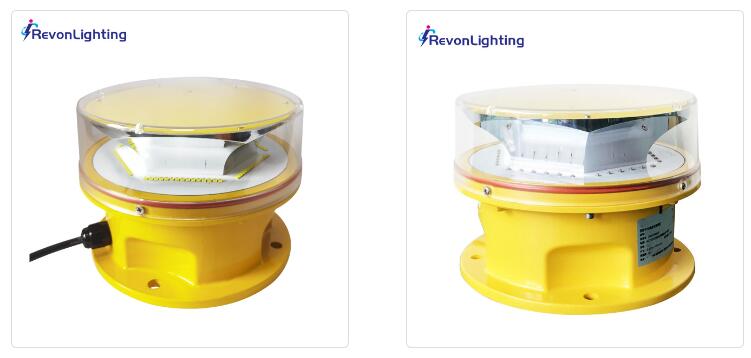Posted: 2024-07-23
The combination of LED obstruction lights and the FAA (Federal Aviation Administration) regulations forms a critical aspect of maintaining aviation safety and order.
LED obstruction lights faa have become an integral part of the aviation landscape, and the FAA plays a crucial role in governing their use and specifications. These lights are not merely decorative or functional additions; they are essential safety devices that prevent potential disasters.
The FAA has established strict guidelines for the installation and performance of LED obstruction lights to ensure they are highly visible and reliable. This is of paramount importance, especially in areas where tall structures such as towers, buildings, and wind turbines pose a risk to aircraft. For example, a tall communication tower located near an airport must have LED obstruction lights that comply with FAA standards. These lights need to be visible from a significant distance and in various weather conditions to provide adequate warning to pilots.
The use of LED technology in obstruction lights offers several advantages over traditional lighting sources. LEDs are more energy-efficient, have a longer lifespan, and provide a brighter and more consistent light output. This makes them ideal for meeting the demanding requirements of the FAA. Consider a wind farm with multiple turbines. The LED obstruction lights installed on these turbines not only consume less power but also remain operational for extended periods without the need for frequent maintenance or replacement, reducing the potential for lights to malfunction and compromising safety.
The FAA's oversight ensures that the colors, intensities, and flashing patterns of the LED obstruction lights are standardized and easily recognizable by pilots. This consistency is crucial for avoiding confusion and ensuring prompt identification of potential obstructions. For instance, a specific color combination and flashing rate might indicate the height and type of the structure, allowing pilots to make informed decisions and take appropriate actions.
In addition to new installations, the FAA also regulates the retrofit of existing obstruction lights with LED technology. This helps to bring older structures up to modern safety standards and improve the overall visibility of potential hazards. A case in point might be an aging industrial chimney that is required to upgrade its lighting system to LED obstruction lights in accordance with FAA regulations to continue operating safely in proximity to airspace.
The FAA also conducts regular inspections and audits to ensure that LED obstruction lights are functioning properly. This includes verifying that the lights are not obscured by dirt, debris, or vegetation and that the power supply and control systems are in good working order. Failure to comply with these regulations can result in severe penalties and potential safety risks.

Furthermore, the FAA collaborates with manufacturers and industry experts to stay updated on the latest technological advancements in LED obstruction lights. This allows for the development of more effective and efficient lighting solutions that enhance aviation safety. For example, new developments in LED optics and control systems might lead to lights that are even more visible and energy-efficient, which the FAA can then incorporate into its regulations.
In emergency situations or during adverse weather conditions, the reliability of LED obstruction lights becomes even more critical. The FAA's strict standards ensure that these lights continue to function optimally, providing pilots with the necessary visual cues to avoid obstacles. Imagine a stormy night with low visibility. The distinct and reliable LED obstruction lights can make the difference between a safe flight and a potential catastrophe.
LED Obstruction Lights FAA |
12 |
| 34 | 56 |
The importance of LED obstruction lights and the FAA's role extends beyond just commercial aviation. General aviation, unmanned aircraft systems, and military operations also rely on these lights and the regulations governing them to ensure safe operations.
In conclusion, the combination of LED obstruction lights and the FAA's regulatory framework is a vital aspect of maintaining the safety and integrity of our airspace. The continuous evolution and enforcement of these standards help protect lives, property, and the efficient operation of the aviation industry. As technology progresses and our skies become more crowded, the significance of LED obstruction lights complying with FAA regulations will only continue to grow, ensuring that the journey through the air remains safe and unobstructed.